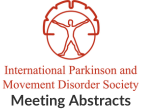Theory of mind in patients with cerebellar neurodegenerative disorders
Objective: The aim of this study was to investigate theory of mind (ToM) in patients with different cerebellar neurodegenerative disorders (CD). Background: CD are a…CEREBELLAR COGNITIVE AFFECTIVE SYNDROME IN SPINOCEREBELLAR ATAXIA TYPE 3
Objective: This preliminary study aims to examine whether motor and cognitive features in spinocerebellar ataxia type 3 (SCA3) are manifestations of a shared and parallel,…Comparative Measurement of Balance between Parkinson Disease and Spinocerebellar Ataxia – A Dynamic Posturography Study
Objective: This study is conducted to compare the balance impairment between Parkinson Disease in both OFF and ON state and Spinocerebellar Ataxia. Background: The dynamic…Clinical characterization and disease progression in spinocerebellar ataxia type 35: A case series
Objective: To characterize the clinical presentation and disease progression of patients with spinocerebellar ataxia type 35 (SCA35). Background: Mutations in TGM6 have been identified to…Amantadine Therapy for Ataxia Management in Patients with Spinocerebellar Ataxia Type 7
Objective: To report the therapeutic effects of amantadine in a patient with Spinocerebellar ataxia type 7 (SCA7) Background: Spinocerebellar ataxia type 7 is a rare…The use of Virtual Reality to Assess the Quality of Life in Patients with Spinocerebellar Ataxia
Objective: To assess independence, confidence and balance for development daily activities in patients with SCAs, before and after rehabilitation with virtual reality (ViR). Background: Spinocerebellar…Circadian rhythm alterations in an in vitro cellular model of Spinocerebellar ataxia type 17
Objective: To study in vitro expression of circadian rhythm genes (CLOCK, BMAL) in fibroblasts and neural cells of SCA17 patients. Background: Spinocerebellar Ataxia 17 (SCA17)…Respiratory Function and Functional Decline in Spinocerebellar Ataxia Type 2
Objective: To evaluate the relationship between the values of Peak Expiratory Flow rate (PEFr), Maximum Inspiratory Pressure (MIP), the presence of respiratory complaints with disease…Prospective study of cognition in SCA2
Objective: Evaluate prospectively cognitive dysfunction in subjects with SCA2 using Mini Mental Examination (MMSE) and Montreal Cognition Assesment (MOCA), looking for correlation between cognitiion and motor…Spinocerebellar ataxias in Southern Brazil: genotypic and phenotypic evaluation of 213 families
Objective: To describe and correlate the genotype and phenotype of patients diagnosed with SCAs. Background: Spinocerebellar Ataxias (SCAs) are neurodegenerative diseases with autosomal dominant inheritance…
- « Previous Page
- 1
- 2
- 3
- 4
- 5
- 6
- …
- 8
- Next Page »
